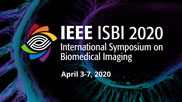Collection:

Alzheimer's disease (AD) is a common irreversible neurodegenerative disease among elderlies. To identify the early stage of AD (i.e., mild cognitive impairment, MCI), many recent studies in the literature use only a single time point and ignore the conducive multi-time points information. Therefore, we propose a novel method that combines multi-time sparse smooth network with long short-term memory (LSTM) network to identify early and late MCIs from multi-time points of resting-state functional magnetic resonance imaging (rs-fMRI). Specifically, we first construct the sparse smooth brain network from rs-fMRI data at different time-points, then an attention based stacked bidirectional LSTM is used to extract features and analyze them longitudinally. Finally, we classify them using Softmax classifier. The proposed method is evaluated on the public Alzheimer's Disease Neuroimaging Phase II (ADNI-2) database and demonstrates the impressive erformance compared with the state-of-the-art methods.
- IEEE MemberUS $11.00
- Society MemberUS $0.00
- IEEE Student MemberUS $11.00
- Non-IEEE MemberUS $15.00
Videos in this product
Longitudinal Analysis of Mild Cognitive Impairment Via Sparse Smooth Network and Attention-Based Stacked Bi-Directional Long Short Term Memory
Alzheimer's disease (AD) is a common irreversible neurodegenerative disease among elderlies. To identify the early stage of AD (i.e., mild cognitive impairment, MCI), many recent studies in the literature use only a single time point and ignore the conducive multi-time points information. Therefore, we propose a novel method that combines multi-time sparse smooth network with long short-term memory (LSTM) network to identify early and late MCIs from multi-time points of resting-state functional magnetic resonance imaging (rs-fMRI). Specifically, we first construct the sparse smooth brain network from rs-fMRI data at different time-points, then an attention based stacked bidirectional LSTM is used to extract features and analyze them longitudinally. Finally, we classify them using Softmax classifier. The proposed method is evaluated on the public Alzheimer's Disease Neuroimaging Phase II (ADNI-2) database and demonstrates the impressive erformance compared with the state-of-the-art methods.
 Cart
Cart Create Account
Create Account Sign In
Sign In
